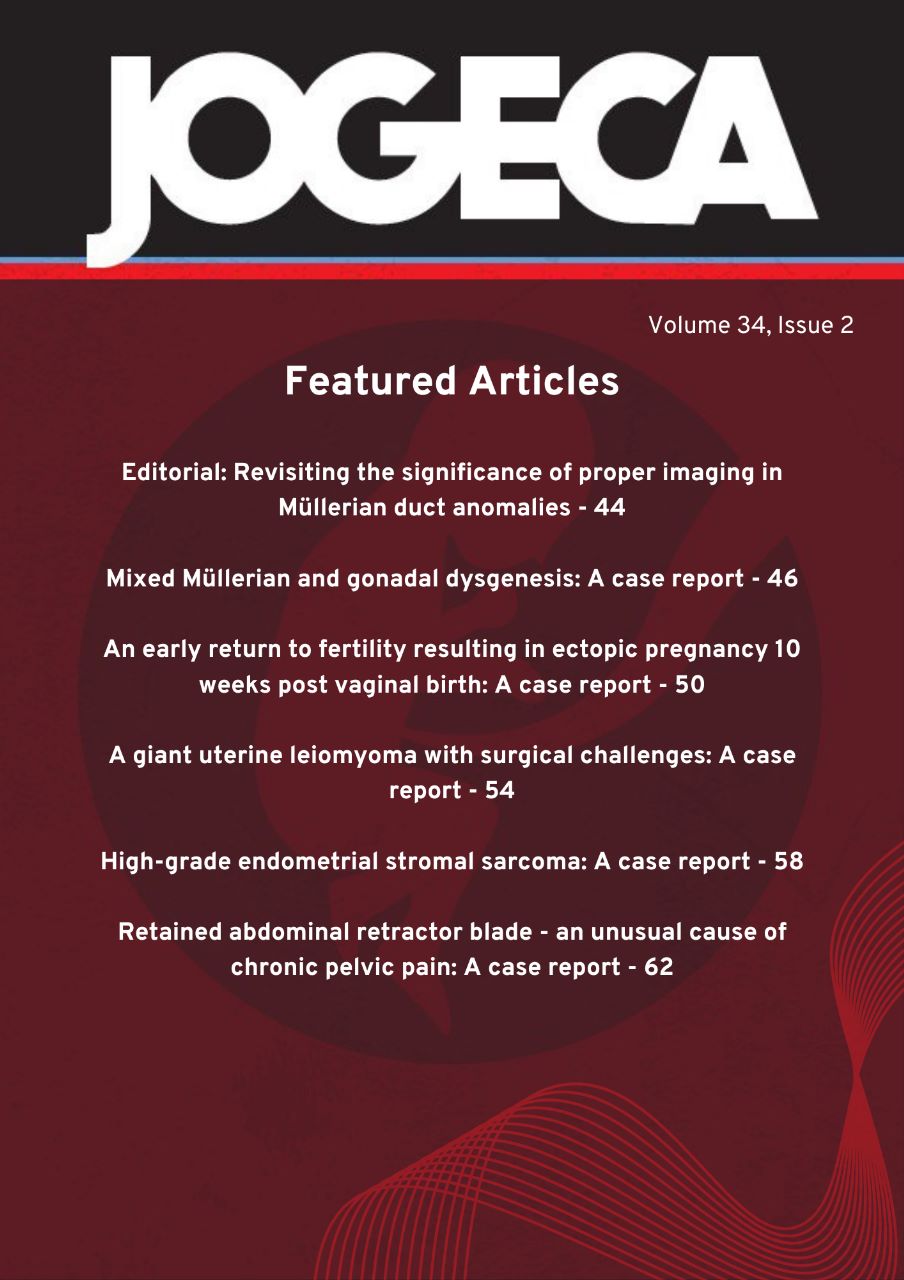PRIMARY OVARIAN INSUFFICIENCY, A CHALLENGING DIAGNOSIS. A CASE SERIES
DOI:
https://doi.org/10.59692/jogeca.v36i1.169Keywords:
PREMATURE OVARIAN INSUFFICIENCYAbstract
INTRODUCTION
Primary ovarian insufficiency is rare, affecting 1-2% of those under 40 with only 0.1% of cases below 30 years. Etiology is mainly idiopathic, however chromosomal defects, autoimmune processes, and iatrogenic causes are associated. Symptoms are those of menopause but of intermittent durations and severities; and management targets the symptoms and complication prevention.
CASE PRESENTATION
We present two 18-year-old patients of African and Indian descent with an eight and five-month history of amenorrhea respectively with otherwise unremarkable history and physical exams. Investigation showed elevated FSH levels of 45.07 and 88.73 mIU/ml done four weeks apart in the first patient and 68.69 in the second patient. All other parameters were normal.
DISCUSSION
Aetiology is mainly idiopathic. 10-12% of diagnosed patients have chromosomal abnormalities such as Turner’s syndrome, fragile X syndrome, and genetic permutations of FMR 1 gene. Autoimmune causes are mainly autoimmune adrenal diseases. Autoimmune thyroiditis, Dermatomyosistis and Diabetes Mellitus type 1 also show association. Mumps Oophritis is the main infectious cause. Laparoscopic surgical procedures that involve the ovaries or affect their blood supply, pelvic radiotherapy, and chemotherapy all comprise the iatrogenic causes. Lifestyle and environmental factors such as smoking and heavy metals exposure also contribute.
Diagnosis is by serum FSH levels of above 25 IU/l in two separate readings four weeks apart with a four-month history of amenorrhea occurring before 40 Years. Both patients were under 30 and met the criteria.
Management involves hormone replacement therapy for symptoms, prevention and treatment of osteoporosis, oocyte donation for infertility, and counseling for both the psychological impact of the disease and the numerous complications living with the disease.
CONCLUSION
Multidisciplinary care is necessary for management of this rare and challenging illness
Downloads
Published
How to Cite
Issue
Section
Categories
License
Copyright (c) 2024 The Authors.

This work is licensed under a Creative Commons Attribution 4.0 International License.




